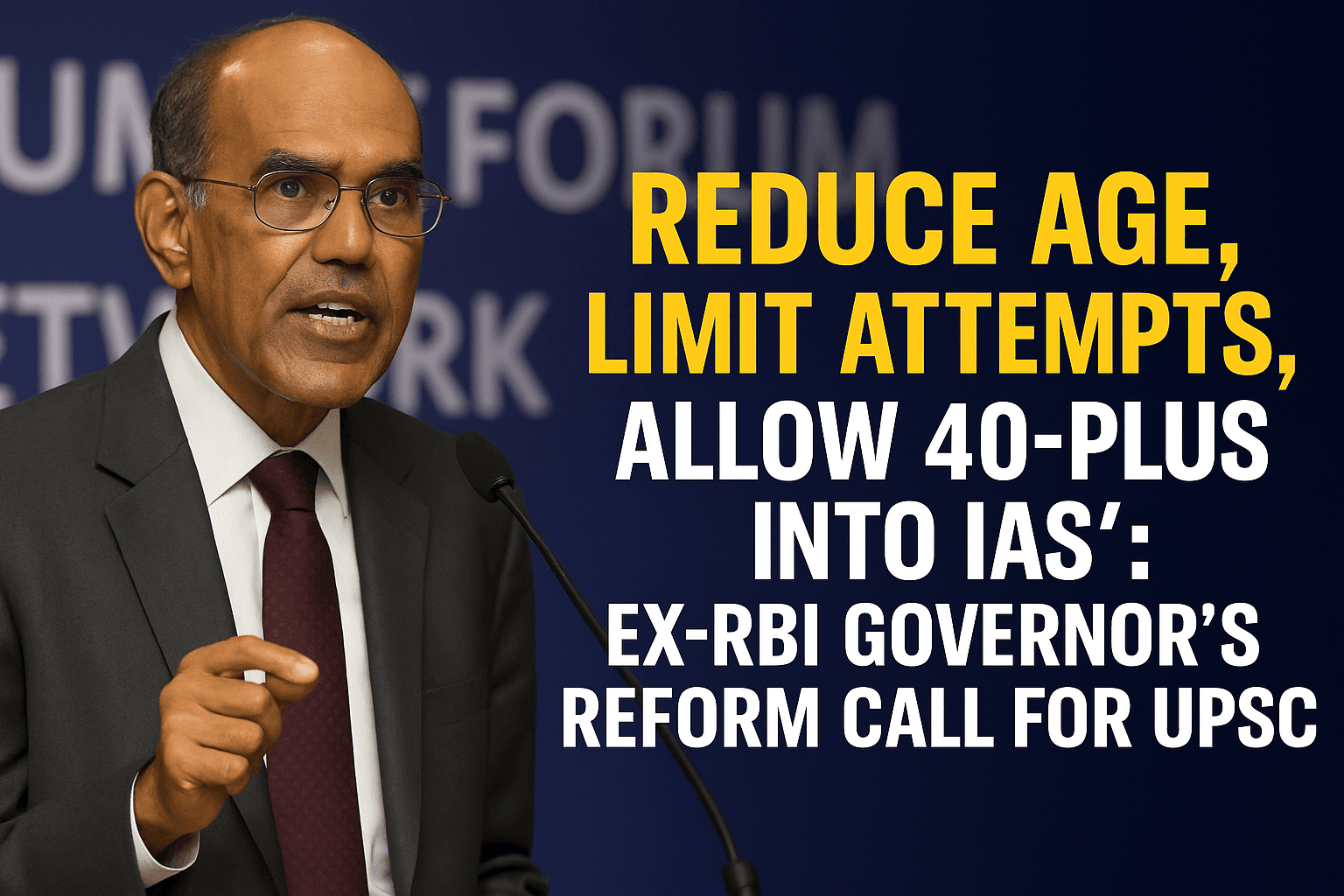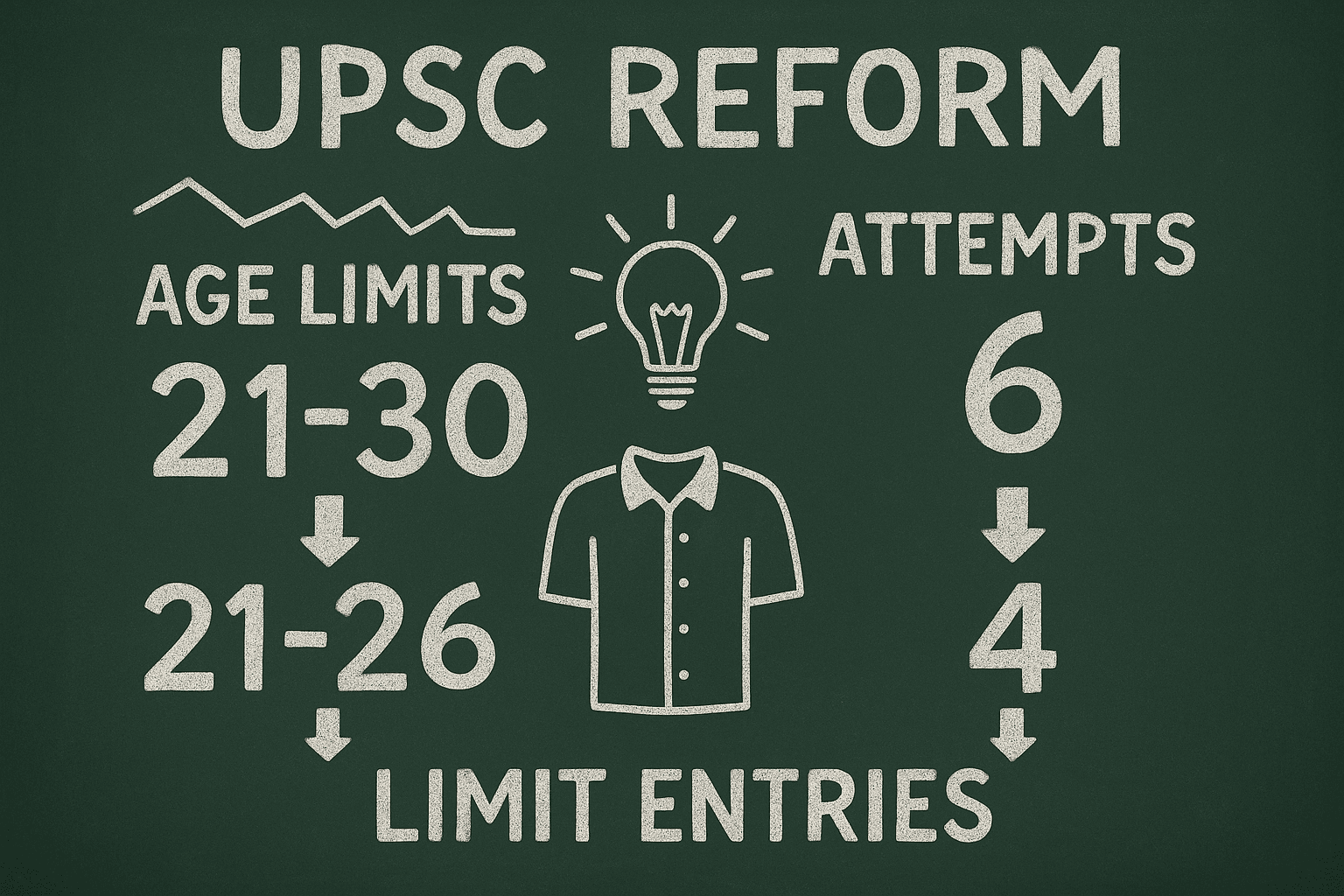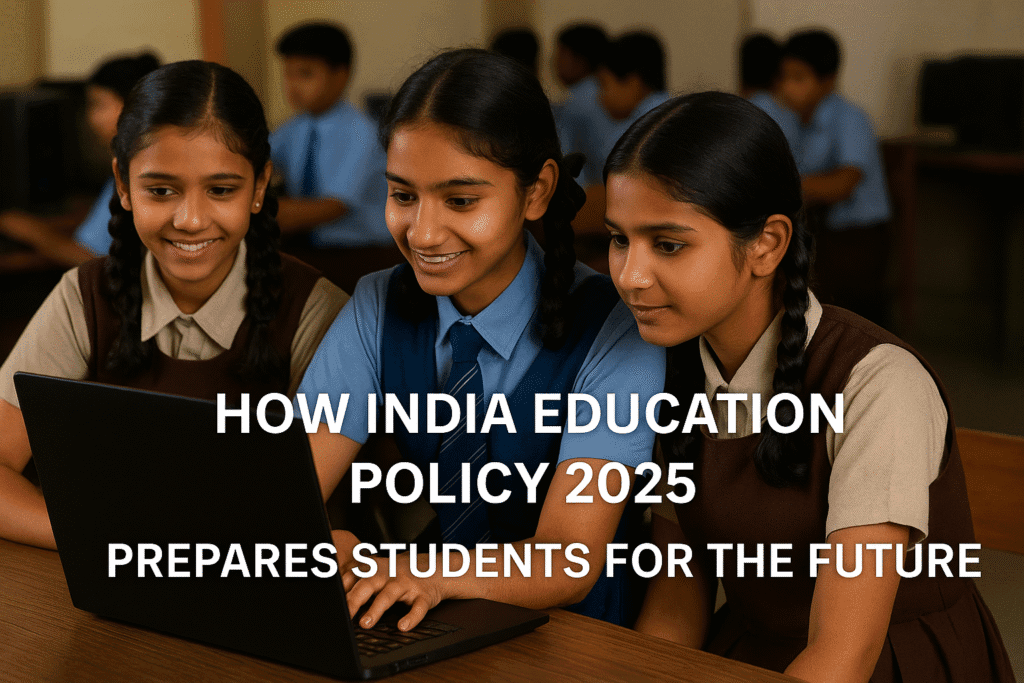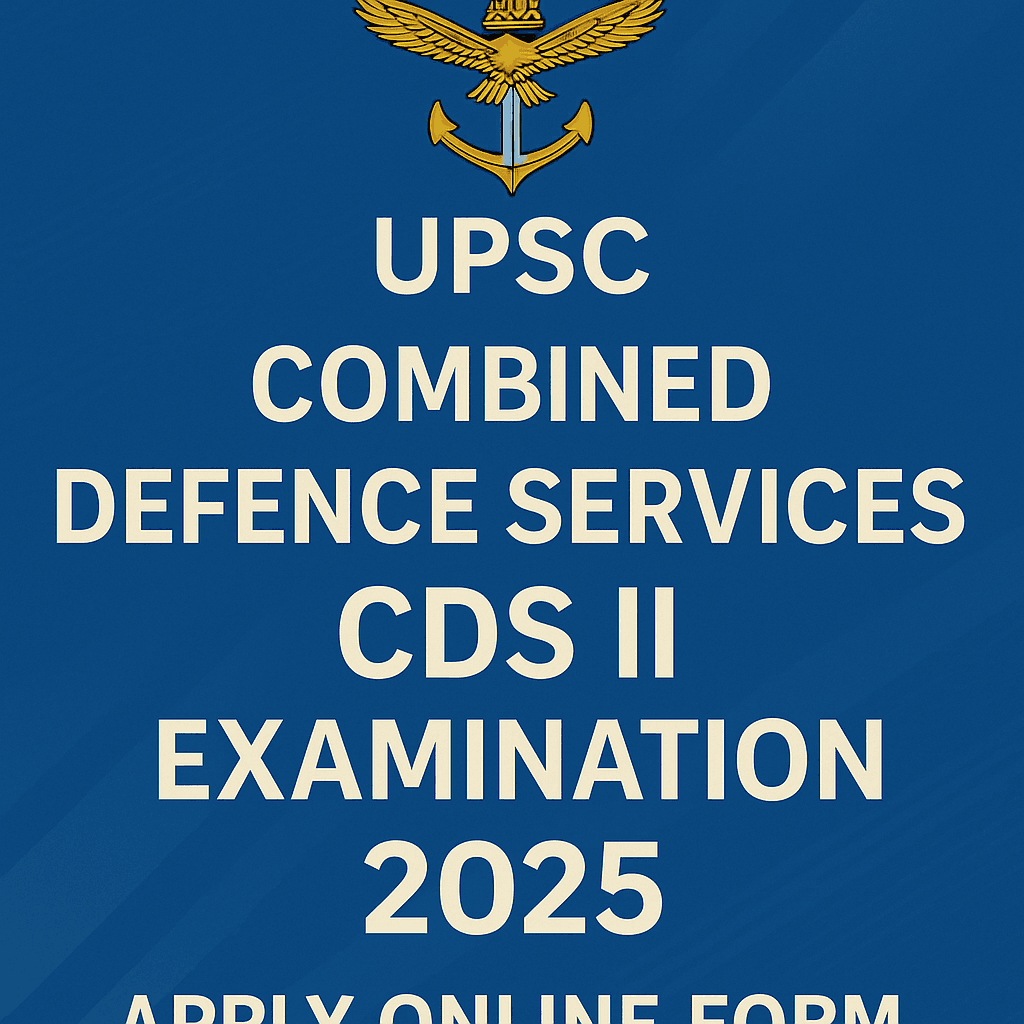Ex-RBI Chief Seeks UPSC Age Cut, Entry for 40+ Aspirants
Former RBI Governor D Subbarao has stirred debate with a thought-provoking call for major reforms in India’s civil services recruitment system, particularly the UPSC examinations. His comments, which came during a panel discussion on administrative efficiency and inclusivity, have sparked reactions across the bureaucracy, academic circles, and social media.
Among his proposals: lower the entry age, limit the number of attempts, and — perhaps most controversially — open a second window for aspirants above 40 to join the Indian Administrative Service (IAS).

What Subbarao Said — and Why It Matters
Subbarao, who himself is a 1972-batch IAS officer and served as Finance Secretary before heading the Reserve Bank of India, questioned the rationale behind allowing candidates to prepare for nearly a decade for the exam.
“Why should we allow candidates to enter the system so late, sometimes at 32 or even beyond? By then, they’ve spent their most productive years preparing — not contributing,” he said.
He argued that the system, in its current form, rewards endurance over efficiency, encouraging years of rote preparation instead of developing professional skills or work experience.

Reform Suggestions at a Glance
- Lower Maximum Age Limit
Subbarao believes India should align with global norms, where most public service entrants are selected in their early to mid-20s. - Reduce Number of Attempts
He proposed bringing down the allowed number of attempts to prevent ‘career UPSC aspirants’, who spend 7–10 years chasing a single goal. - Second Entry Window at 40+
In an innovative idea, he suggested creating a path for professionals above 40 — especially those in the private sector or academia — to enter the IAS at mid-level based on their domain expertise.
Why This Is Stirring Debate
The UPSC exam has long been criticized for being too grueling, too rigid, and increasingly inaccessible to those without coaching or privilege. Critics say it kills creativity, while supporters argue it filters out the truly committed.
Subbarao’s comments have added fuel to this ongoing fire.
“What’s the point of selecting a 32-year-old into IAS, only to spend the first five years training and learning what others mastered by 25?” one senior bureaucrat echoed on X (formerly Twitter).
Others, however, pushed back, saying reducing age and attempts could exclude disadvantaged candidates who lack early access to resources.
Will This Lead to Change?
Not immediately — but the conversation is growing. Several education reformers and policy analysts have called for the UPSC and the Department of Personnel and Training (DoPT) to re-examine the structure and purpose of the exam in light of modern administrative needs.
A Bigger Question
Subbarao’s larger point wasn’t just about age or attempts. It was about who we want running the country in the next two decades — and whether the current system is picking the right people at the right time.
Whether or not the reforms are implemented, one thing is clear: India’s civil services debate is no longer limited to coaching centers — it’s entered the policy spotlight.
You May Also Like
NEET PG 2025 Postponed: Supreme Court Steps In
Apply Now: Bihar Police BPSSC Enforcement Sub Inspector
UP Assistant Professor Recruitment 2025: Apply Now for B.Ed Positions






